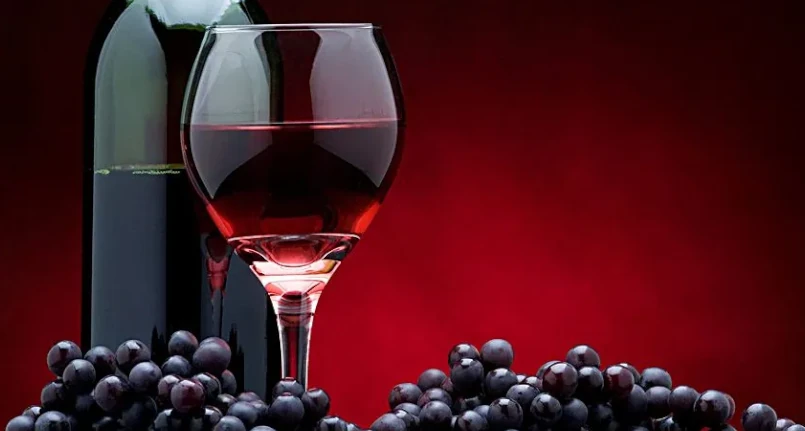Wine and Polyphenols
Wine is an alcoholic beverage obtained from the bacterial fermentation of grapes harvested from vitis vinifera ; it can be white, rosé or red, depending on the type of grape and the winemaking technique, which together determine the quality and quantity of phenolic pigments.
From an organoleptic and gustatory point of view , polyphenols constitute the colour, aroma and stability of the wine. From a biochemical and metabolic point of view, however, the polyphenols in wine perform three very important functions:
- Antioxidant
- Anticancer
- Antiatherogenic
The interaction or influence of polyphenols on the transport and metabolism of cholesterol will be discussed in the following article .
What is cholesterol ?
Cholesterol is a steroid with a polycyclic structure (cyclopentanoperhydrophenanthrene); it is white in color and has a waxy consistency. Cholesterol is ESSENTIAL for animal life, while plants contain other similar substances called phytosterols .
The human body autonomously synthesizes about 70% of the cholesterol necessary for survival and completes its needs by feeding on foods of animal origin; if the exogenous contribution of cholesterol is excessive, if there are genetic alterations or even the combination of both, the levels of total cholesterolemia (or partial LDL) could increase and be excessive.
Lipoproteins
How does cholesterol move in the body?
Cholesterol is a fundamental molecule both for the constitution of cell membranes and for steroid-type hormone production, therefore, its continuous tissue availability is of vital importance. At the plasma level, cholesterol is bound by special transporters which determine its destination (to the suburbs or to the liver ); these carriers are defined LIPO-PROTEINS and the organism synthesizes different types on the basis of the specific function:
- KYLOMICRONS : are lipoproteins produced by the intestine and transport the lipids absorbed in the intestine from the lymphatic circulation to the bloodstream
- VLDL : very low intensity lipoproteins; they are produced by the liver and are responsible for transporting triglycerides and cholesterol from the liver to the tissues
- IDL: intermediate density lipoprotein; they derive from VLDL which lose the lipid portion of triglycerides . They are responsible for transporting the remaining lipids to the tissues
- LDL: low-density lipoprotein ; they derive from the IDL which lose a further lipid portion of the triglycerides and are especially responsible for the transport of cholesterol to the tissues
- HDL : high density lipoprotein ; they are produced by the liver and intestines and are responsible for transporting cholesterol from the tissues to the liver .
In addition to total cholesterol levels , the alteration of the ratio between LDL/HDL and the level of oxidation of LDL also contribute to the increase of lipid deposit in the arteries . This phenomenon, linked to a state of chronic inflammation and possibly to high levels of homocysteinemia , is directly related to the increased cardiovascular risk for atherosclerosis .
The optimal values of the most significant blood lipoproteins are :
| Total cholesterol | < 200mg/dl |
| LDL extension | < 130mg/dl |
| HDL extension | > 40 mg/dl in men > 50mg/dl in women |
What is Atherosclerosis?
Atherosclerosis is a multifactorial degenerative disease affecting medium and large caliber arteries. In Italy and in many other countries of the world it represents a health problem of primary importance, linked mostly to the typical lifestyle of industrialized societies. Atherosclerosis is in fact the cause of very serious pathologies such as angina pectoris , heart attack and stroke … www.my-personaltrainer.it/salute/aterosclerosi.html
Polyphenols and cardiovascular risk
Phenolic substances are molecules capable of preventing various degenerative processes in the body, including atherosclerosis. Polyphenols are contained in many foods of vegetable origin such as fruit , vegetables , extra virgin olive oil , green tea and wine.
Wine contains above all tannins, flavonoids and resveratrol in its TRANS form, therefore trans-resveratrol. This powerful antioxidant appears to significantly increase blood fluidity by improving circulation and reducing cardiac fatigue; moreover, trans-resveratrol has a discrete systemic anti-inflammatory function (for reduction ofcyclooxygenase -2 [COX-2]) and significantly lowers the level of platelet aggregation (by inhibition of eicosanoid synthesis ). Both of these characteristics lead to a reduction in the onset of atherosclerosis and cardiovascular risk.
Benefits
Trans-resveratrol proves to be extremely effective in combating the oxidation of LDL lipoproteins . Oxidized LDLs are considerably smaller and less sensitive to receptor uptake than NON-oxidized ones, therefore their permanence in the blood increases significantly; this dilatation of the metabolic times of the oxidized lipoproteins favors the possibility that these penetrate into the arterial tunics and give rise to the process of atherogenesis .
The antioxidant and preventive function of trans-resveratrol depends on its ability to penetrate LDL and to chelate copper (Cu 2+ )as the main catalyst of the oxidative processes that compromise the structural-functional integrity of the lipids contained in the lipoprotein . The antioxidant mechanism of trans-resveratrol interrupts the oxidative cascade UPstream of the reaction by preventing the cytotoxicity of oxidized and potentially atherogenic LDL.
NB. The ethyl alcohol contained in wine, if introduced in excess, causes an increase in blood triglycerides which can favor the increase in cardiovascular risk .
In conclusion, wine containing phenolic substances can be considered a very useful drink for reaching the quota of food antioxidants; however, considering that it is an alcoholic product, it is not entirely correct to recommend its frequent and systematic consumption. On the other hand, in the absence of pathologies and IF LIKED, the consumption of 2-3 alcoholic units of red wine per day can help prevent lipid oxidation and cholesterol (LDL), consequently also reducing cardiovascular risk.




